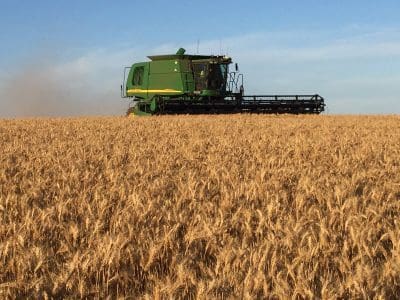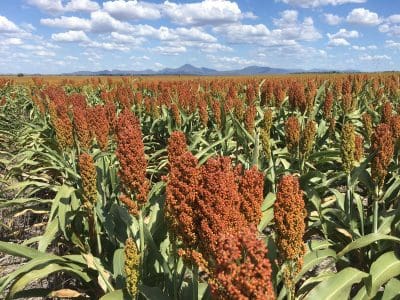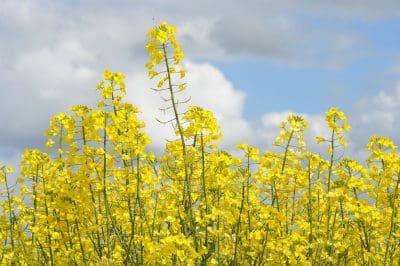WORLD wheat prices in 2018/19 are projected to rise modestly from historically low levels and then fall from 2020/21, according to the latest Agricultural Commodities Report from ABARES.
 The commodities forecaster says the world wheat indicator price for US No. 2 hard red winter, fob Gulf, is likely to average US$234 per tonne in 2018/19 — a six per cent rise from the forecast average of US$221/t in 2017/18.
The commodities forecaster says the world wheat indicator price for US No. 2 hard red winter, fob Gulf, is likely to average US$234 per tonne in 2018/19 — a six per cent rise from the forecast average of US$221/t in 2017/18.
ABARES predicts world wheat production to grow over the medium term, driven by productivity gains, particularly in the Black Sea region, and Australian wheat production and exports to grow over the same period.
However, production in the shorter term in major wheat-exporting countries is forecast to fall from very high levels for the second consecutive year. This is expected to reduce tradeable supplies and lead to some recovery in prices.
In 2018/19 world wheat production is forecast to fall to 742 million tonnes (Mt), reflecting a slight fall in area planted and relatively unchanged average yields.
Lower production is forecast in the Black Sea region and the European Union. This fall is expected to more than offset a slight recovery in production in Australia and the United States, following poor conditions in 2017/18.
The area planted to wheat globally is expected to fall by one per cent in 2018/19.
Exportable supplies in major exporting countries are expected to continue contracting as producers respond to low prices by planting less area to wheat.
World wheat import demand is also expected to continue increasing due to population growth, changing diets and rising incomes.
Prices are then projected to ease in real terms in each subsequent year to 2022/23, when productivity improvements in the Black Sea region cause supply to grow faster than demand and competition for export markets increases.
Australian wheat production to rise but area to fall
In 2018–19 the area planted to wheat in Australia is forecast to remain relatively unchanged at 12 million hectares (Mha) in response to low world prices.
Assuming average seasonal conditions, wheat production is forecast to rise to 24Mt in 2018/19.
This reflects yields returning to trend after frosts, above average temperatures and dry conditions during the winter of 2017.
These factors resulted in below average yields in Western Australia, New South Wales and Queensland in 2017/18.
Australian wheat exports are forecast to fall by 3pc to 16Mt in 2018–19 despite higher production.
Coarse grain outlook
World coarse grain indicator prices are forecast to increase in 2018/19 and the trend will continue to 2020/21, reflecting a tightening of world grain stocks.
 Australian coarse grain production and exports are forecast to increase in 2018/19 and continue to do so over the medium term to meet growing global demand.
Australian coarse grain production and exports are forecast to increase in 2018/19 and continue to do so over the medium term to meet growing global demand.
ABARES forecasts the area planted to coarse grains in 2018/19 will increase by 6pc to 5.6Mha.
The area planted to barley and oats is expected to increase as the price of these crops rises from low levels, increasing their profitability relative to pulse crops.
Likewise, the area planted to grain sorghum is forecast to increase by 23pc to around 618,000 hectares in 2018/19.
Australian coarse grain exports are forecast to be around 14pc higher in 2018/19, mainly reflecting a forecast increase in barley supply—which makes up the vast majority of coarse grain exports.
Oilseeds outlook
Canola prices are forecast to fall in 2018/19 due to an increase in global oilseed supplies partly driven by increased Australian production.
 In 2018/19 the world canola indicator price (Europe rapeseed, fob Hamburg) is forecast to fall by 4 per cent to average US$410/t.
In 2018/19 the world canola indicator price (Europe rapeseed, fob Hamburg) is forecast to fall by 4 per cent to average US$410/t.
Oilseed prices are projected to continue falling in real terms over the medium term as a result of growth in supply from South America.
World oilseed production is forecast to rise by 2pc to 585Mt tonnes in 2018/19 as a result of favourable expected returns leading to an increase in area planted to oilseeds.
Australian canola production is set to grow over the medium term with the area planted in 2018/19 forecast to increase by 8pc to 3Mha.
Cotton outlook
In 2017/18 returns to Australian cotton growers at the gin-gate are forecast to fall by 1pc to average $600 per bale (227 kilograms) of lint, including the value of cottonseed and net of ginning costs.
In 2018–19 returns to growers are forecast to remain at similar levels in real terms due to abundant world production capacity keeping prices low.
Then, in 20022/23, returns to Australian cotton growers are projected to average $630 per bale in real terms, driven by rising world cotton prices.
ABARES predicts Australian cotton production in 2017/18 to increase by 12pc to 995,000 tonnes, despite a fall in area planted.
A 24pc rise in irrigated cotton yields is expected to more than offset a 10pc fall in area planted.
Source: ABARES
Grain Central: Get our free daily cropping news straight to your inbox – Click here

HAVE YOUR SAY